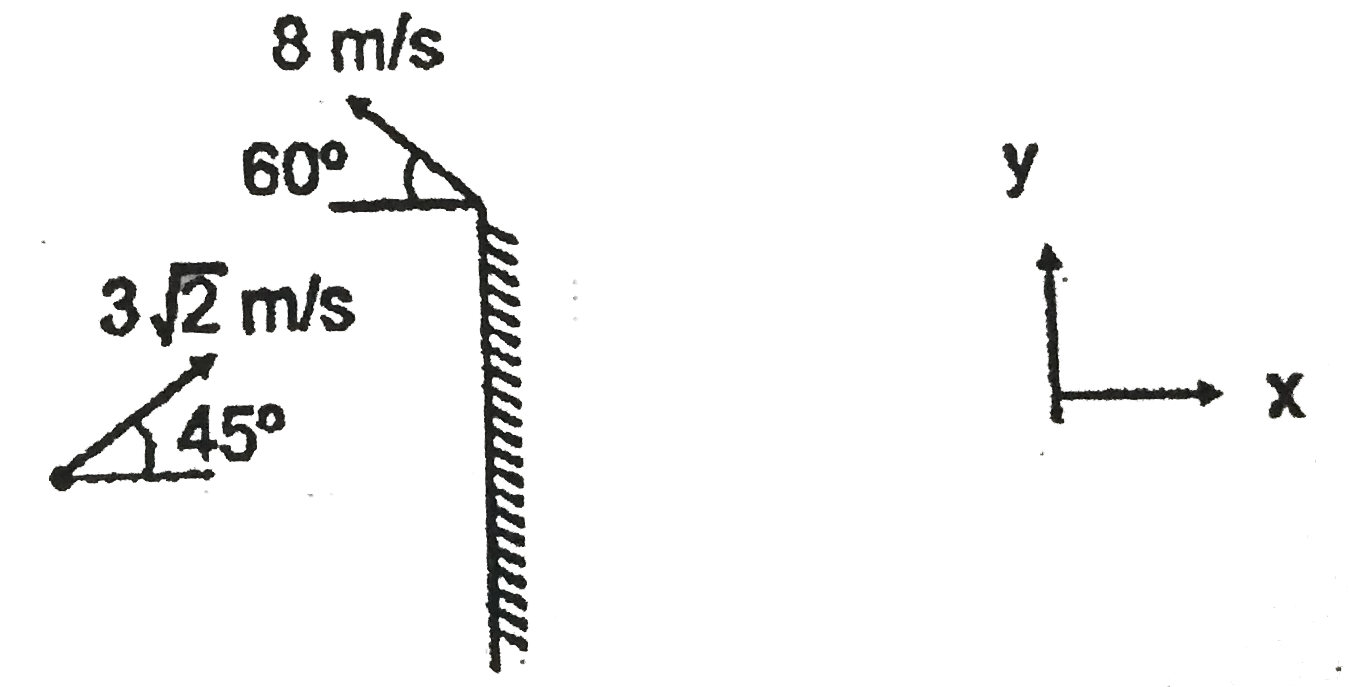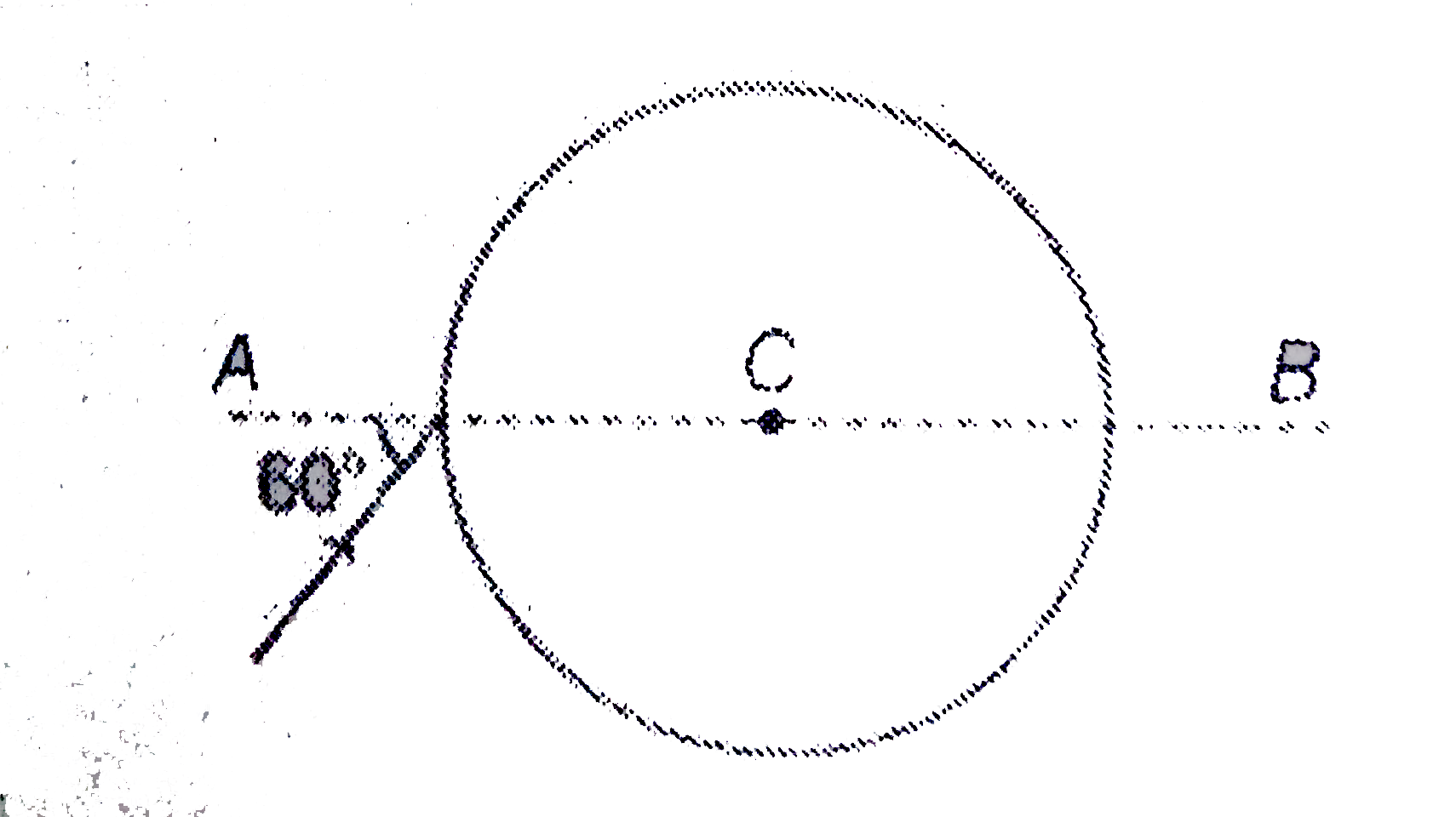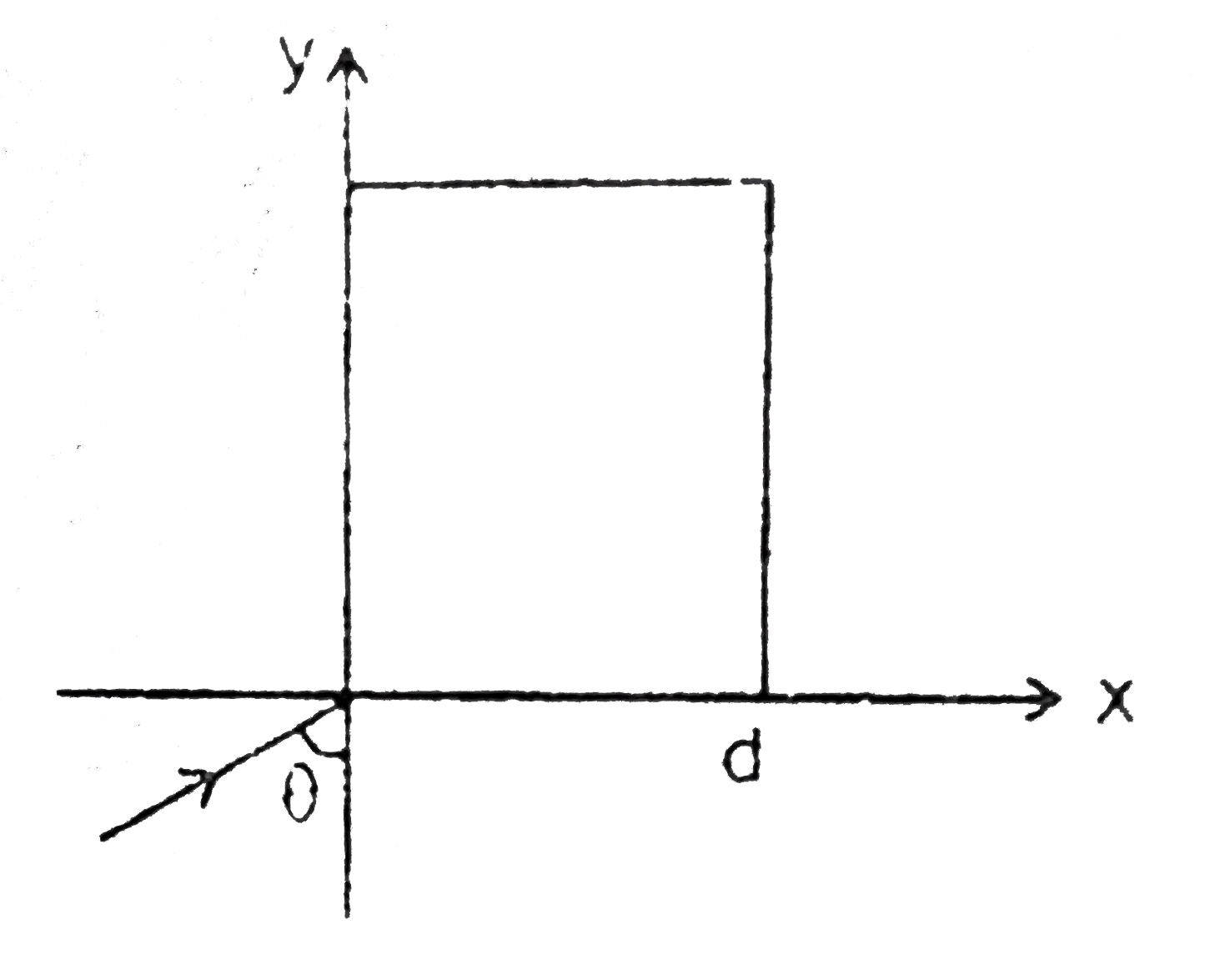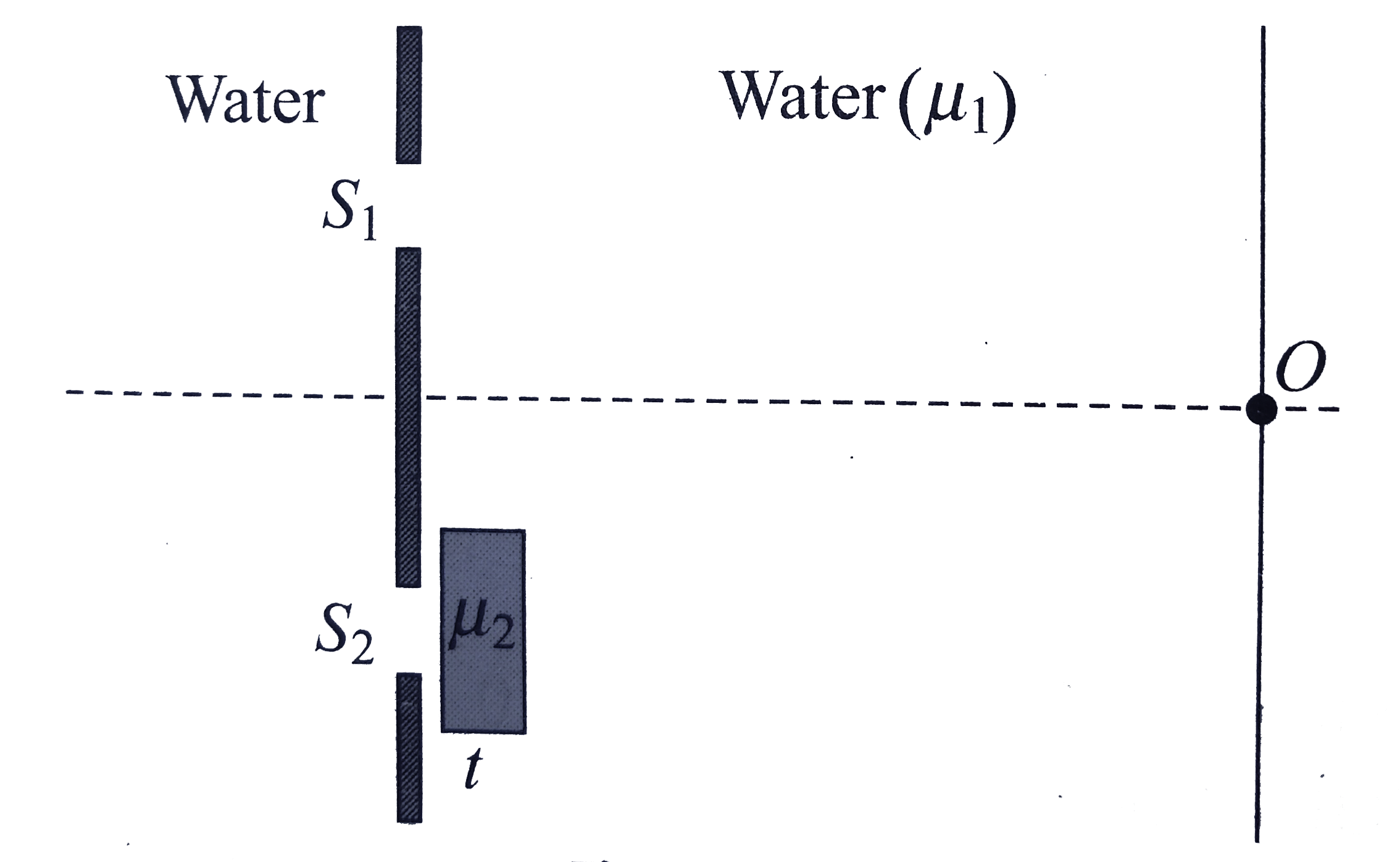Complete Solutions to Exercise of chapter PART TEST 4 of Class 11 book with complete answers and questions
| Class 11 | PHYSICS |
| Chapter | PART TEST 4 |
| RESONANCE | Exercise |
| Number Of Questions | 30 |
| Academic Year | 2023-24 |
In the situation shown in figure, find the velocity of image.

View SolutionA ray of light falls on a transparent sphere with centre at C as shown in figure. The ray emerges from the sphere parallel to line AB. The refractive index of the sphere is

View SolutionA light waves travels from glass to water. The refractive index for glass and water are `3/2` and `4/3` respectively. The value of the critical angle will be
View SolutionA simple microscope has a focal length of `5 cm` . The magnification at the least distince of distinct vision is-
View SolutionRefractive index of water is `5//3`. A light source is placed in water at a depth of 4m. Then what must be the minimum radius of disc placed on water surface so that the light of source can be stopped?
View SolutionA boy is trying to start a fire by focusing Sunlight on a piece of paper using an equiconvex lens of focal length 10 cm. The diameter of the Sun is `1.39xx10^(9)m` and its mean distance from the earth is `1.5xx10^(11)m`. What is the diameter of the Sun's image on the paper?
View SolutionA convex lens is made up of three different materials as shown in the figure. For a point object placed on its axis, the number of images formed are

View SolutionWhich of the following diagrams shows correctly the dispersion of white light by a prism ?
View SolutionIn a Fresnel biprism experiment the two positions of lens give separation between the slits as 16 cm and 9 cm respectively. The actual distance of separation is
View SolutionIn a compound microscope, the intermediate image is
View SolutionThe angular dispersion produced by a prism
View SolutionA cylinderical optical fibre (quarter circular shape) of refractive index `n = 2` and diameter `d = 4mm` is surrounded by air. A light beam is sent into the fibre along its axis as shown in figure. Then the smallest outer radius `R` (as shown in figure) for which no light escapes after incident on curved surface of fibre is:
 .
.
View SolutionA light is incident on face `AB` of an equilateral glass prism `ABC`. After refraction at `AB`, the ray is incident on face `BC` at the angle slightly greater than critical angles so that it gets reflected from face `BC` and finally emerges out from face `AC`. Net deviation angle of the ray is `112^(@)` anticlockwise. The angle of incidence 'i' has value:
 .
.
View SolutionA ray hits the y-axis making an angle `theta` with y-axis as shown in the figure. The variation of refractive index with x-coordinate is `mu=mu_(0)(1-(x)/(d))` for `0 le x le d(1-(1)/(mu_(0)))` and `mu = mu_(0)` for `x lt 0` where `d` is a positive constant. The maximum x-coordinate of the path traced by the ray is
 .
.
View SolutionAn isosceles trapezium of reflecting material of refractive index `sqrt 2` and dimension of sides being 5cm, 5cm, 10cm and 5 cm. The angle of minimum deviation by this when light is incident from air and emerges in air is:

View SolutionA triangular medium has varying refracting index `n = n_(0) + ax`, where x is the distance (in cm) along x-axis from origin and `n_(0) = (4)/(3)`. A ray is incident normally on face OA at the mid-point of OA. The range of a so that light does not escape through face AB when it falls first time on the face `AB(OA = 4 cm, OB = 3 cm and AB = 5 cm)` : (surrounding medium is air)

View SolutionAn object AB is placed parallel and close to the optical axis between focus F and center of curvature C of a converging mirror of focale length f as shown in Figure. Then,

View SolutionA ray of light travelling in a transparent medium falls on a surface separating the medium from air at an angle of incidence `45^(@)`. The ray undergoes total internal reflection. If n is the refractive index of the medium with respect to air, select the possible value (s) of n from the following
View SolutionYoung's double-slit experiment is conducted in water `(mu_(1))` as shown in figure and a glass plate of thickness t and refractive index `mu_(2)` is placed in the path of `S_(2)`. Find the magnitude of the optical path difference at 'O'.

View SolutionTwo coherent monochromatic light beams of intensities I and 4I are superposed. The maximum and minimum possible intensities in the resulting beam are
View SolutionIf yellow light emitted by sodium lamp in Young's double - slit - experiment is replaced by a monochromatic blue light of the same intensity
View SolutionWhat happens by the use of white light in Young's double slit experiment:
View SolutionThe reflecting surface of a plane mirror is vertical. A particle is projected in a vertical plane which is also perpendicular to the mirror. The initial speed of the particle is `10m//s` and the angle of projection is `60^(@)` from the normal of the mirror. The point of projection is at a distance 5 m from the mirror. The particle moves towards te mirror. Just before the particle touches the mirror, the velocity of approach of the particle and the image is 2 n (in `m//s`) then find `n`.
View SolutionAstronomial telescope has two lenses of focal power 0.5D and 20D. Then its magnifying power is:
View SolutionThe plane face of a plano convex lens is silvered.If `mu`be the refrative index and R, the radius of curvature of curved suraface, then system will behave like a concave mirror of curvature
View SolutionA vessel of depth 2 d cm is half filled with a liquid of refractive index `µ_(1)` and the upper half with a liquid of refractive index `µ_(2)`. The apparent depth of the vessel seen perpendicularly from about is
View SolutionA parallel beam of light is incident on a lens of focal length 10cm. A parallel slab of refractive index 1.5 and thickness 3 cm is placed on the other side of the lens. The nature of the final image from the lens slab combination is: (Assume rays paraxial)

View SolutionWavelength of light used in an optical instrument are `lambda_(1) = 4000 Å` and `lambda_(2) = 5000Å` then ratio of their respective resolving powers (corresponding to `lambda_(1)` and `lambda_(2)`) is
View SolutionStatement I: Thin films such as soap bubble or a thin layer of oil on water show beautiful colors when illuminated by white light.
Statement II: It happens due to the interference of light reflected form the upper surface of thin film.
View SolutionStatement 1: If two prisms of small apex angles are made of same material then prism of larger apex angle will produce more dispersion. Statement 2: Dispersive power of a prism is proportional to apex angle of prism.
View Solution
Exercise questions and complete solutions for chapter PART TEST 4 of RESONANCE ENGLISH of Class 11